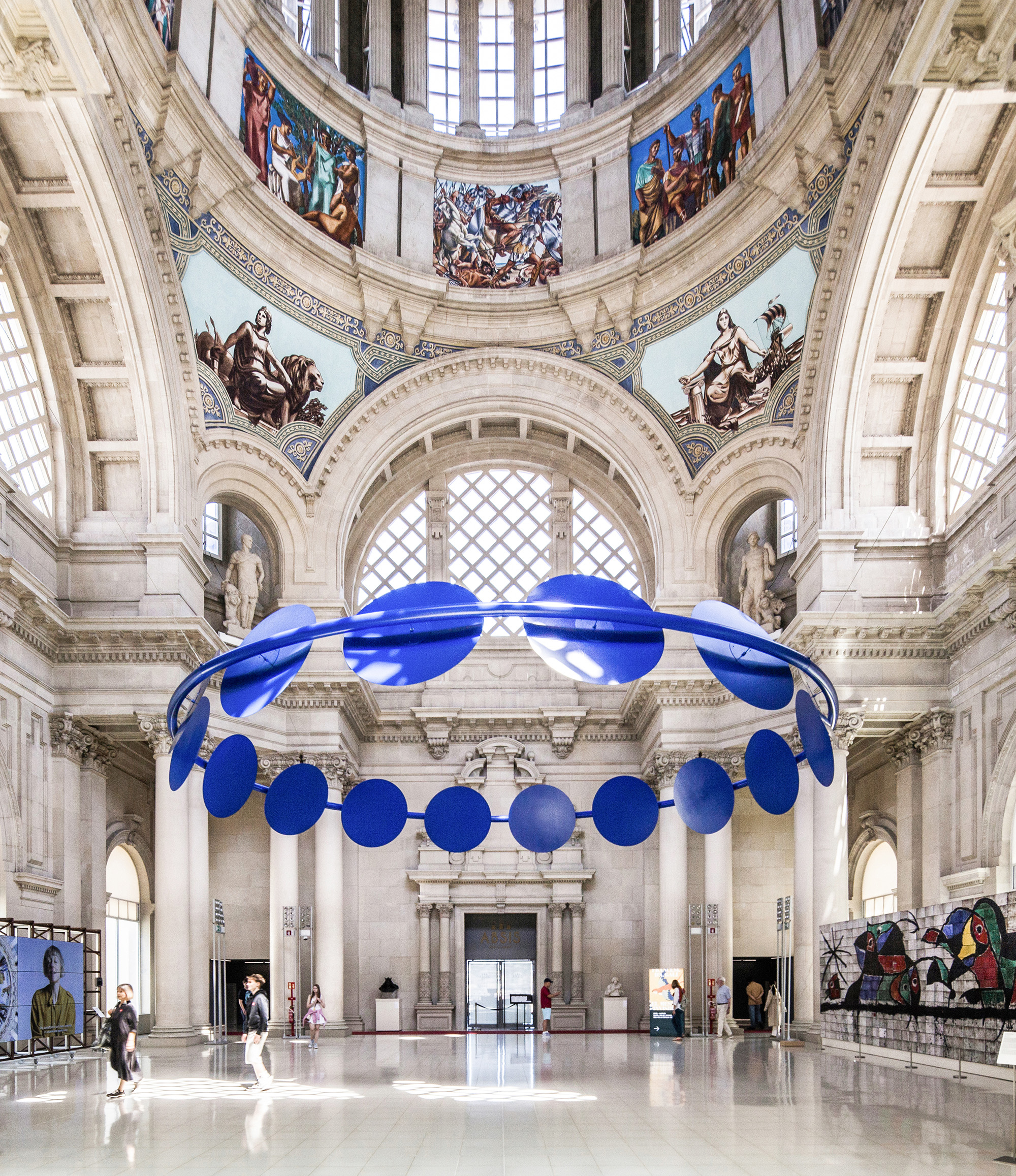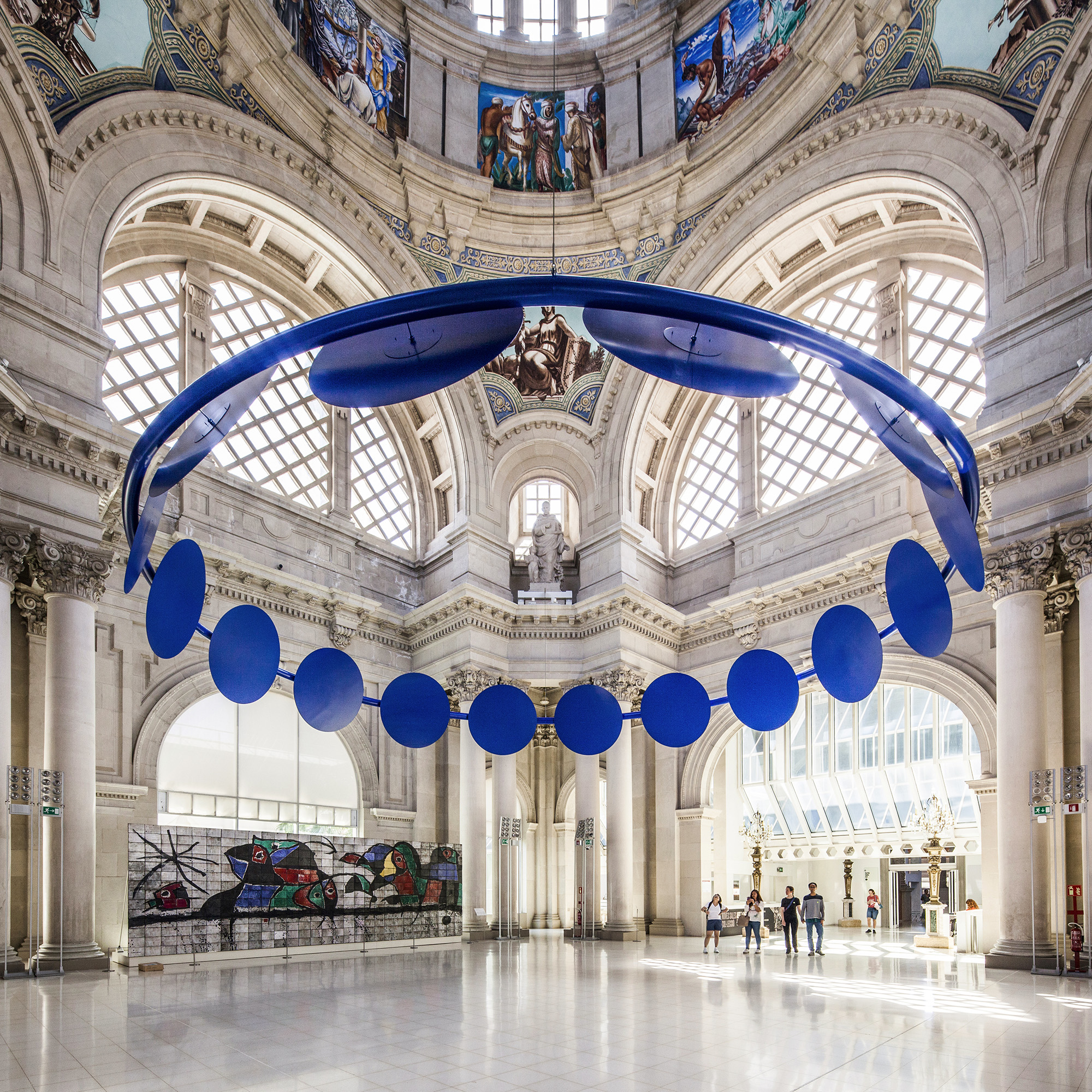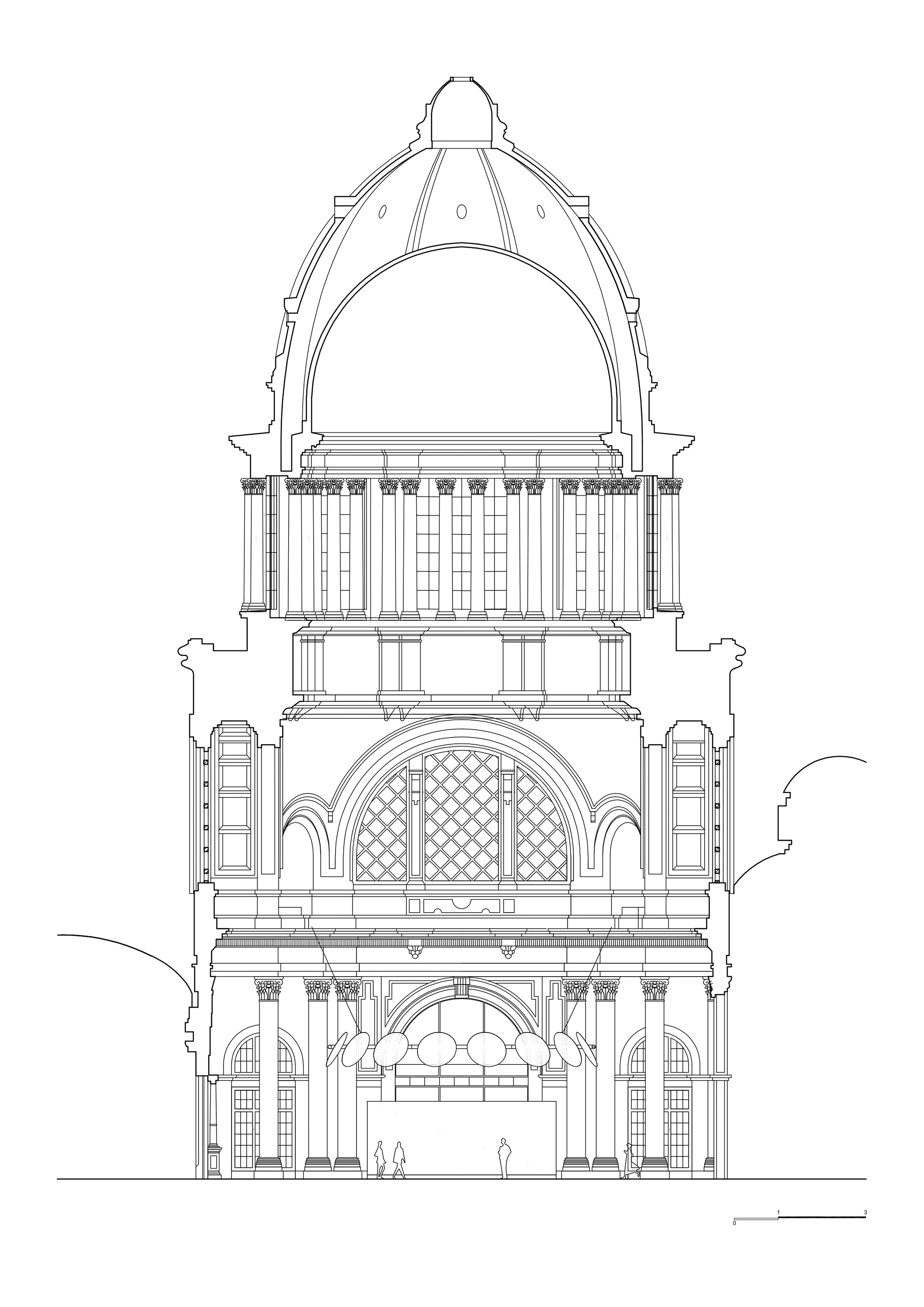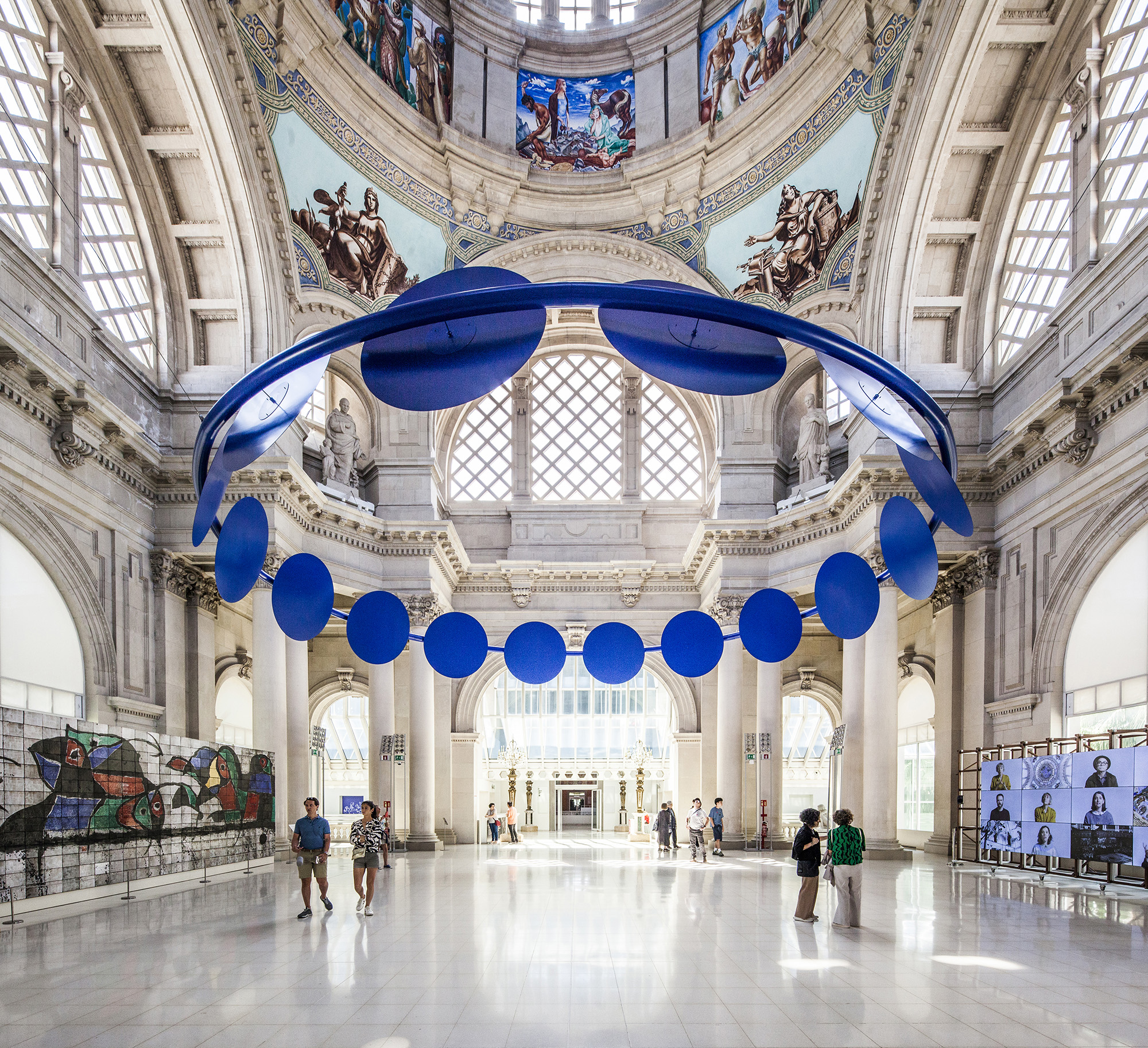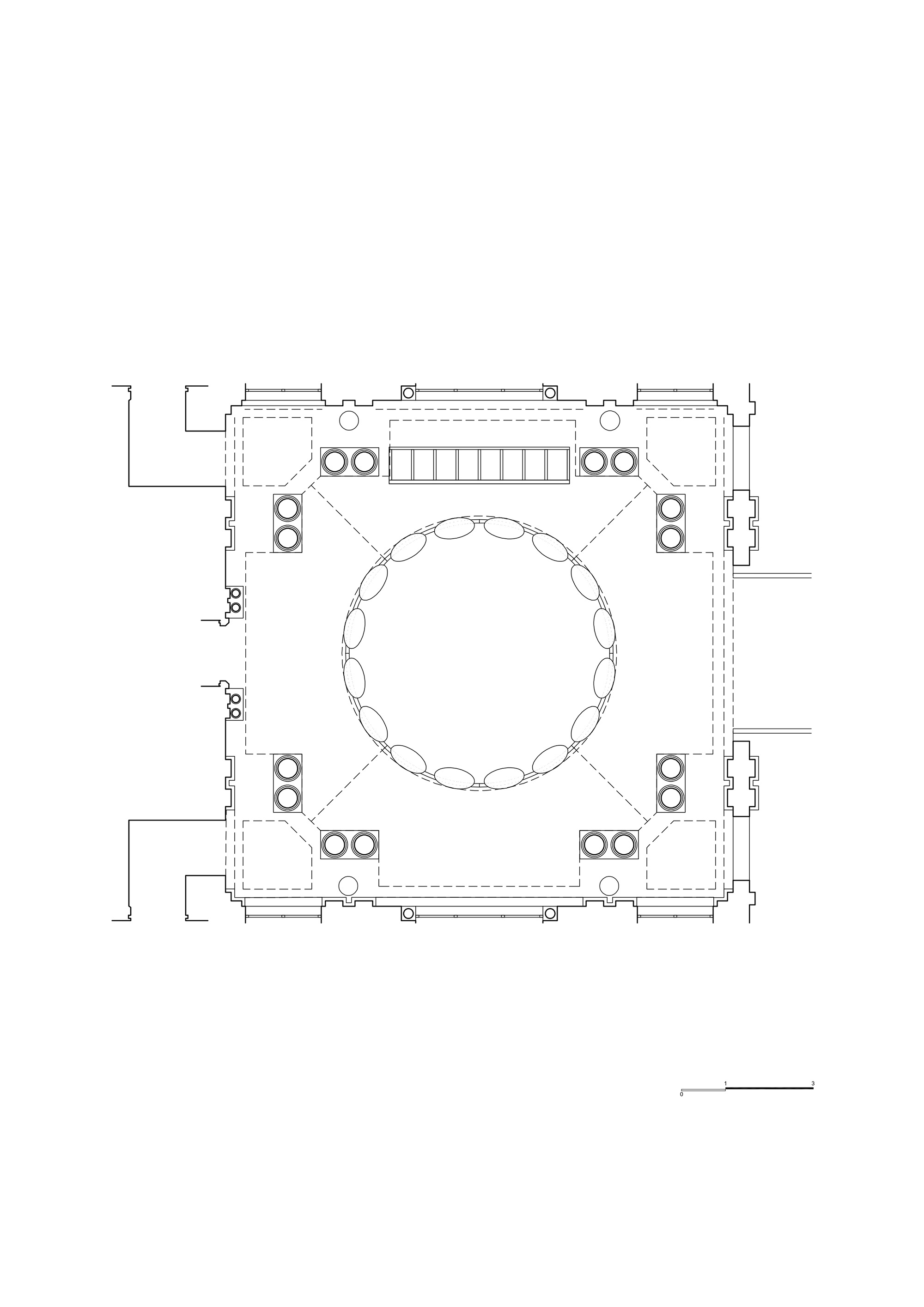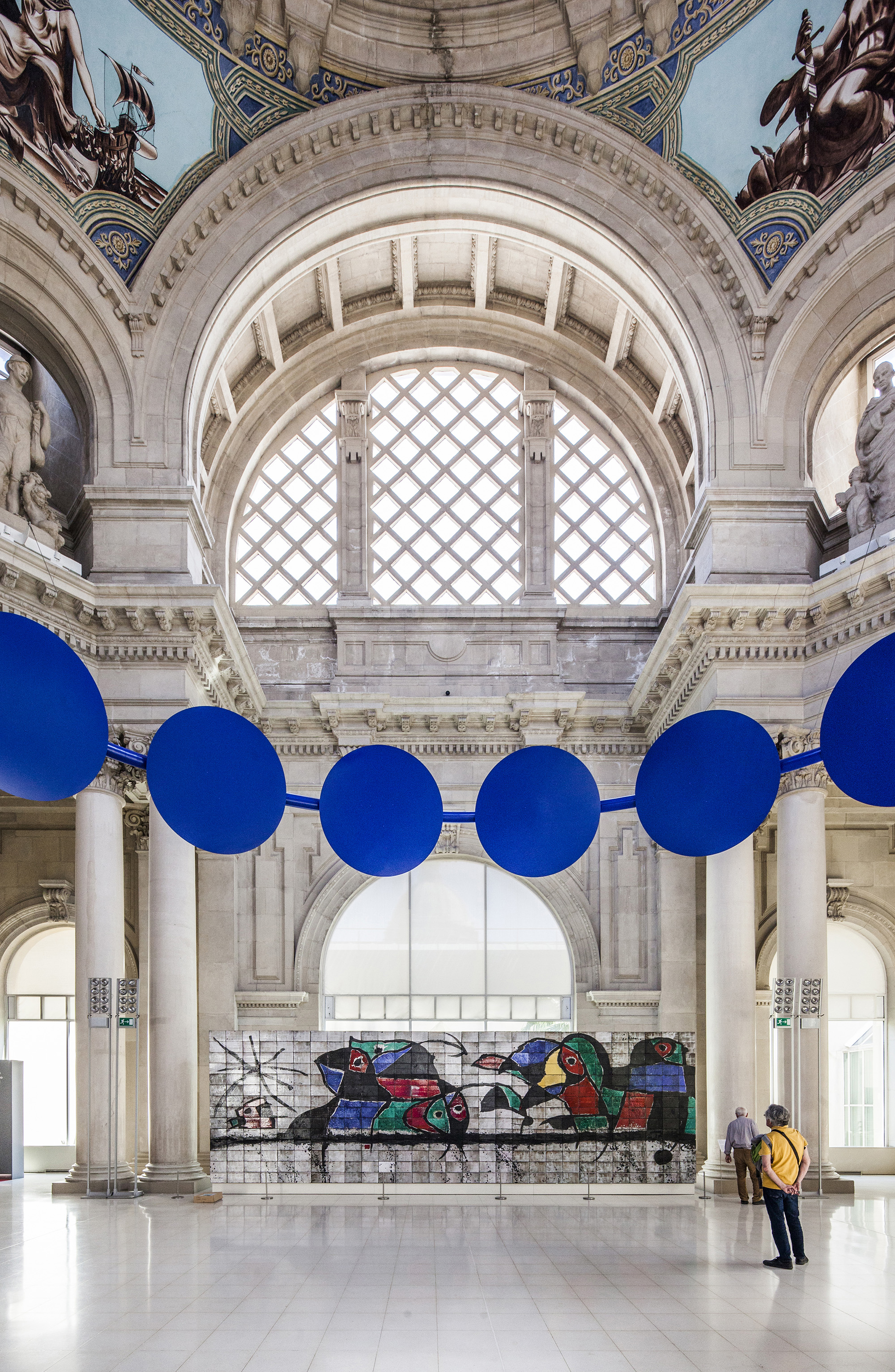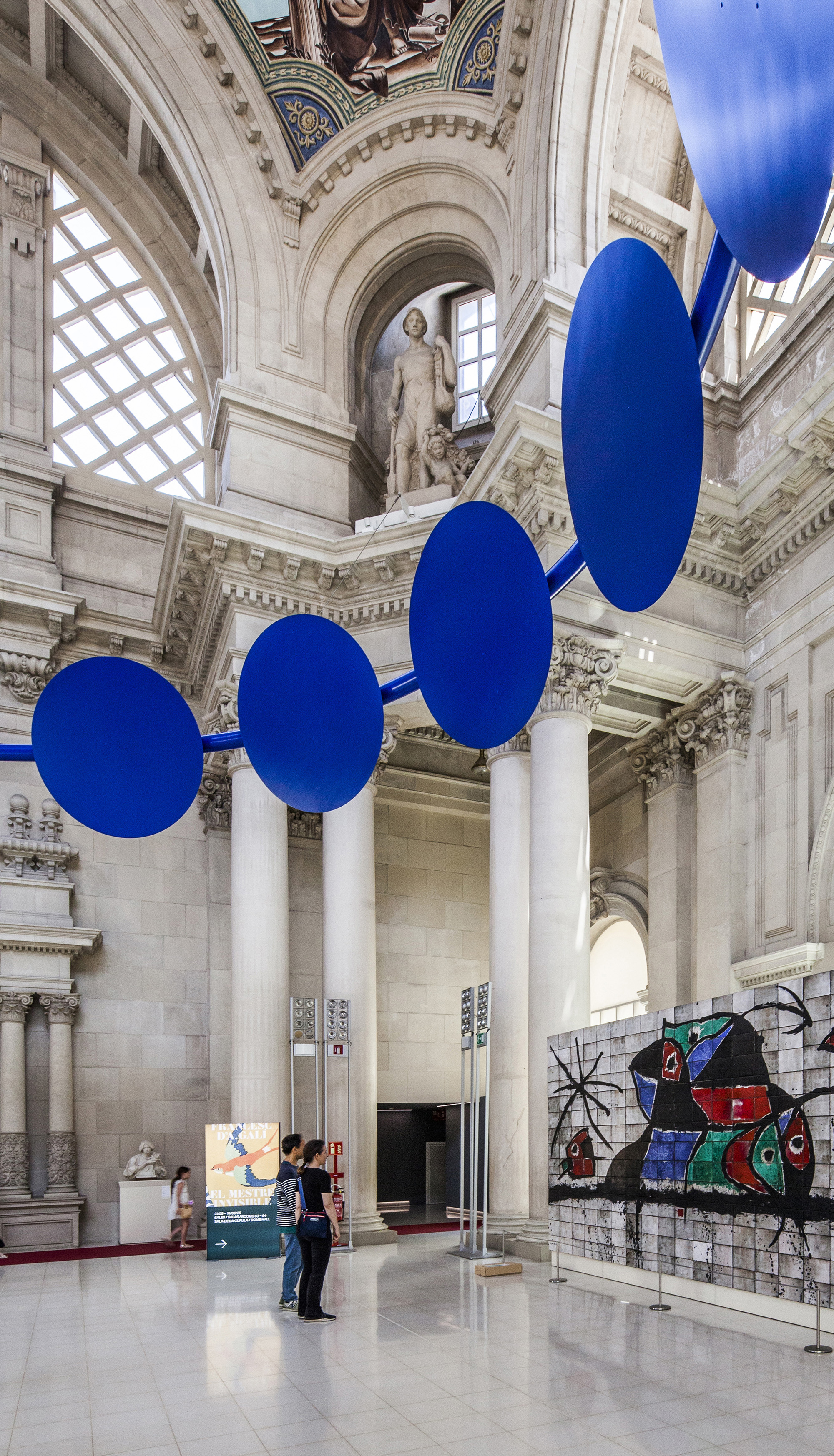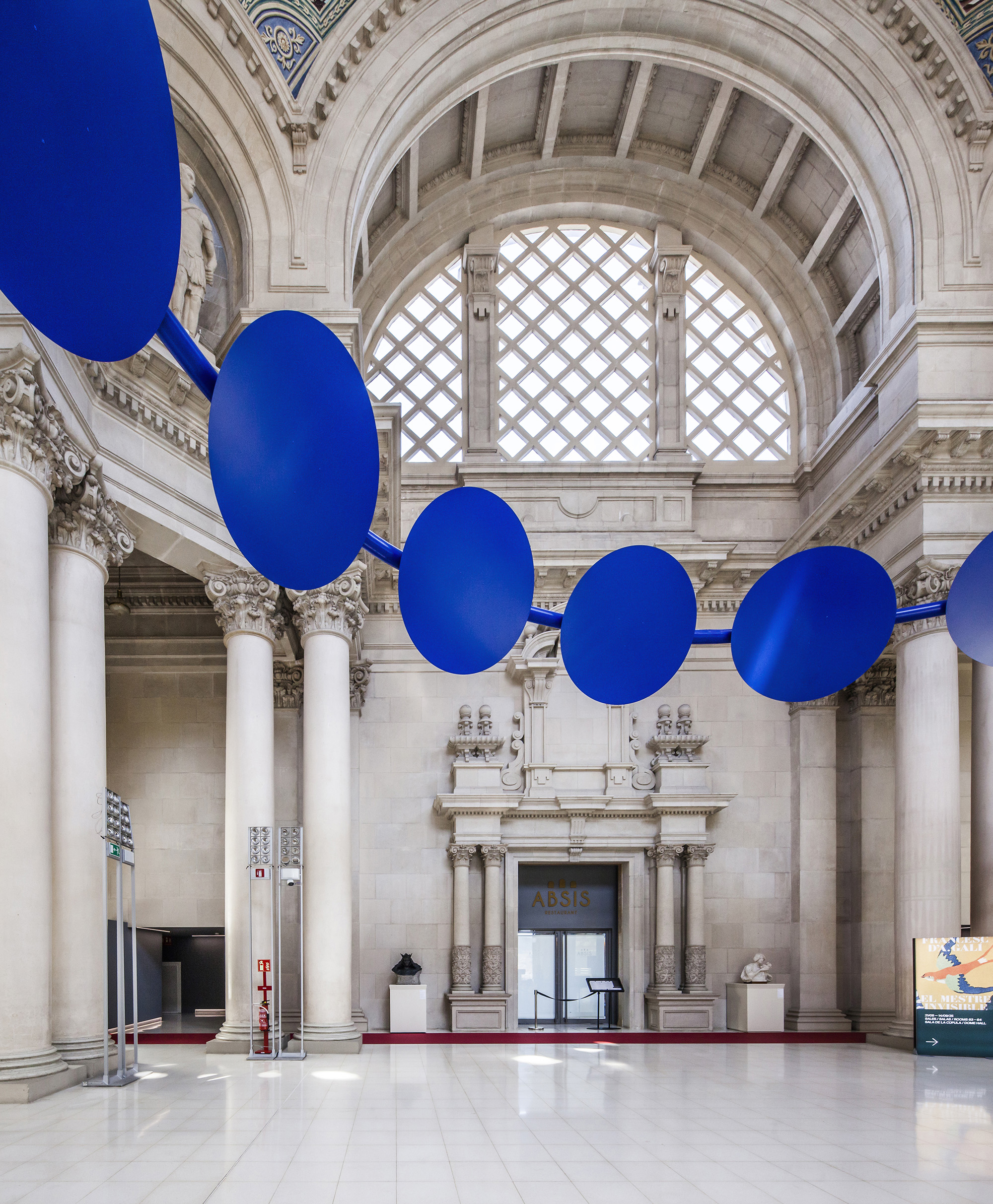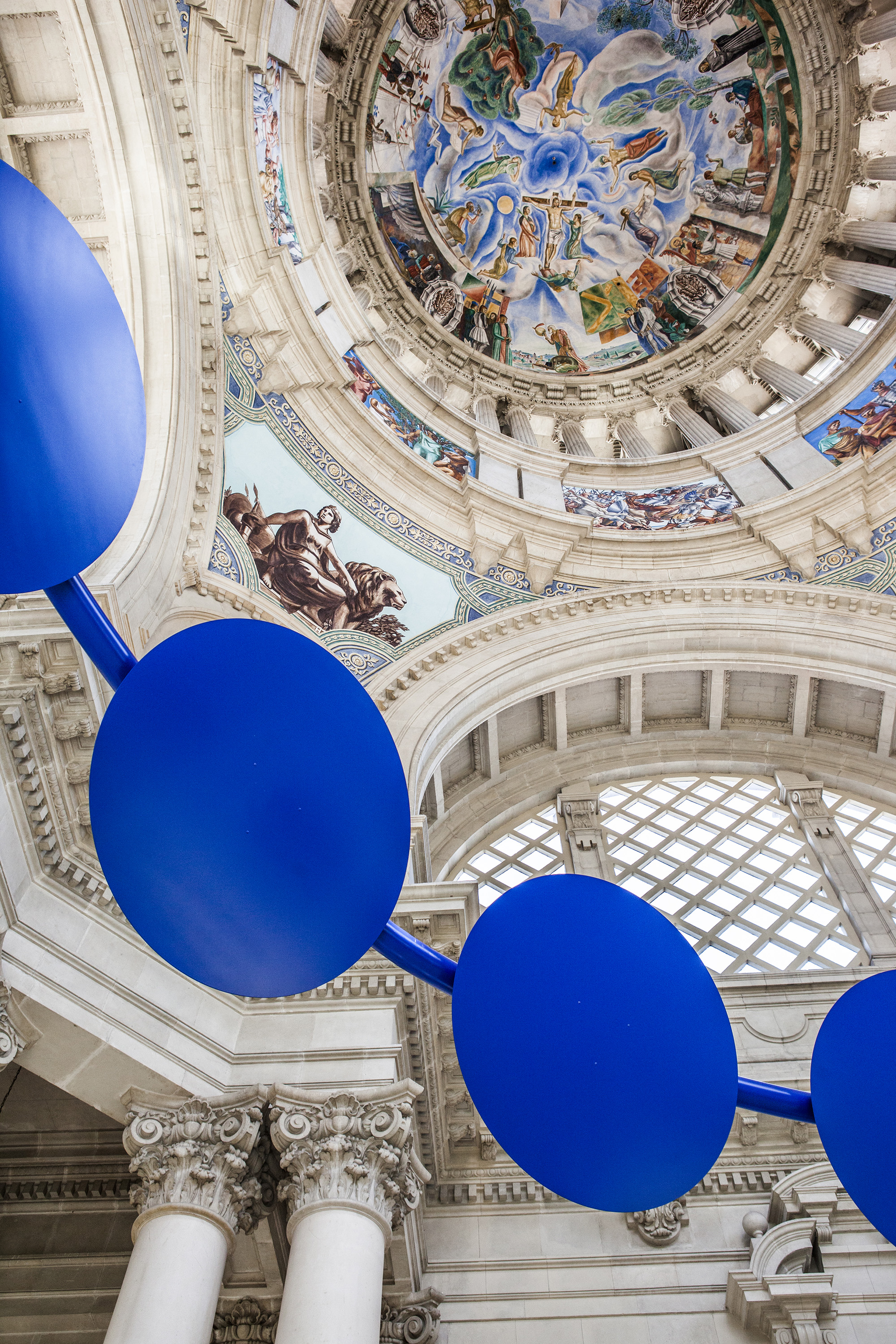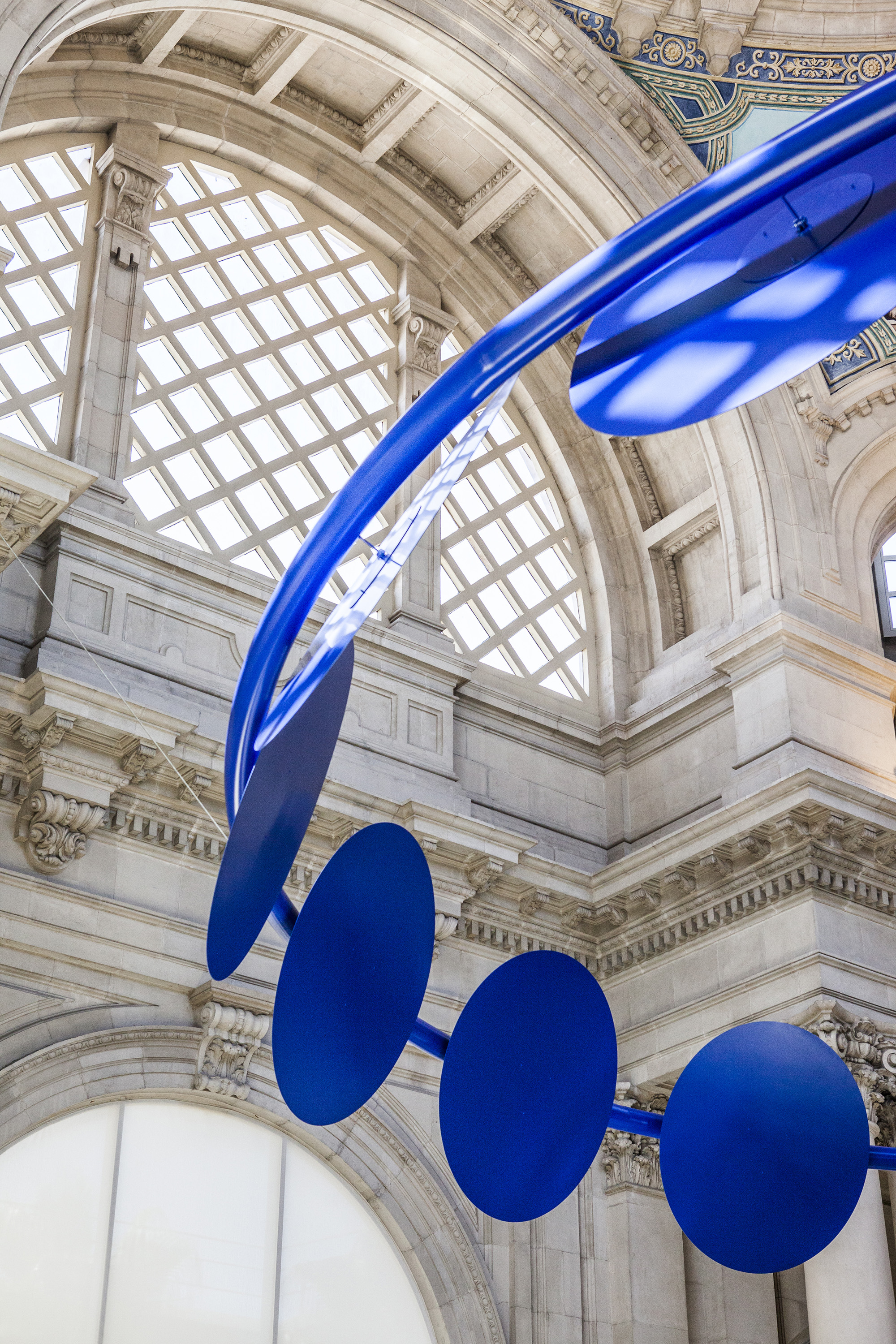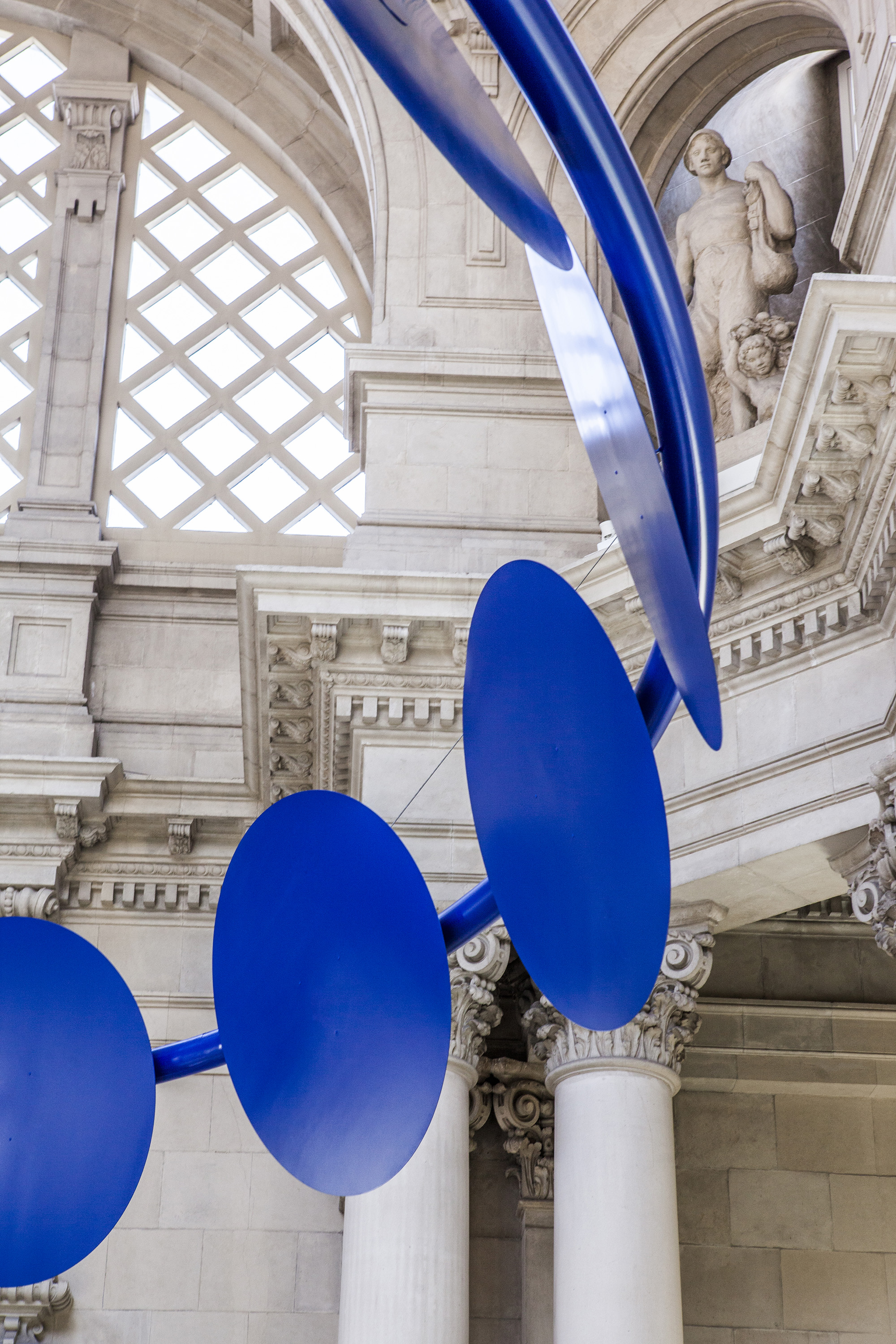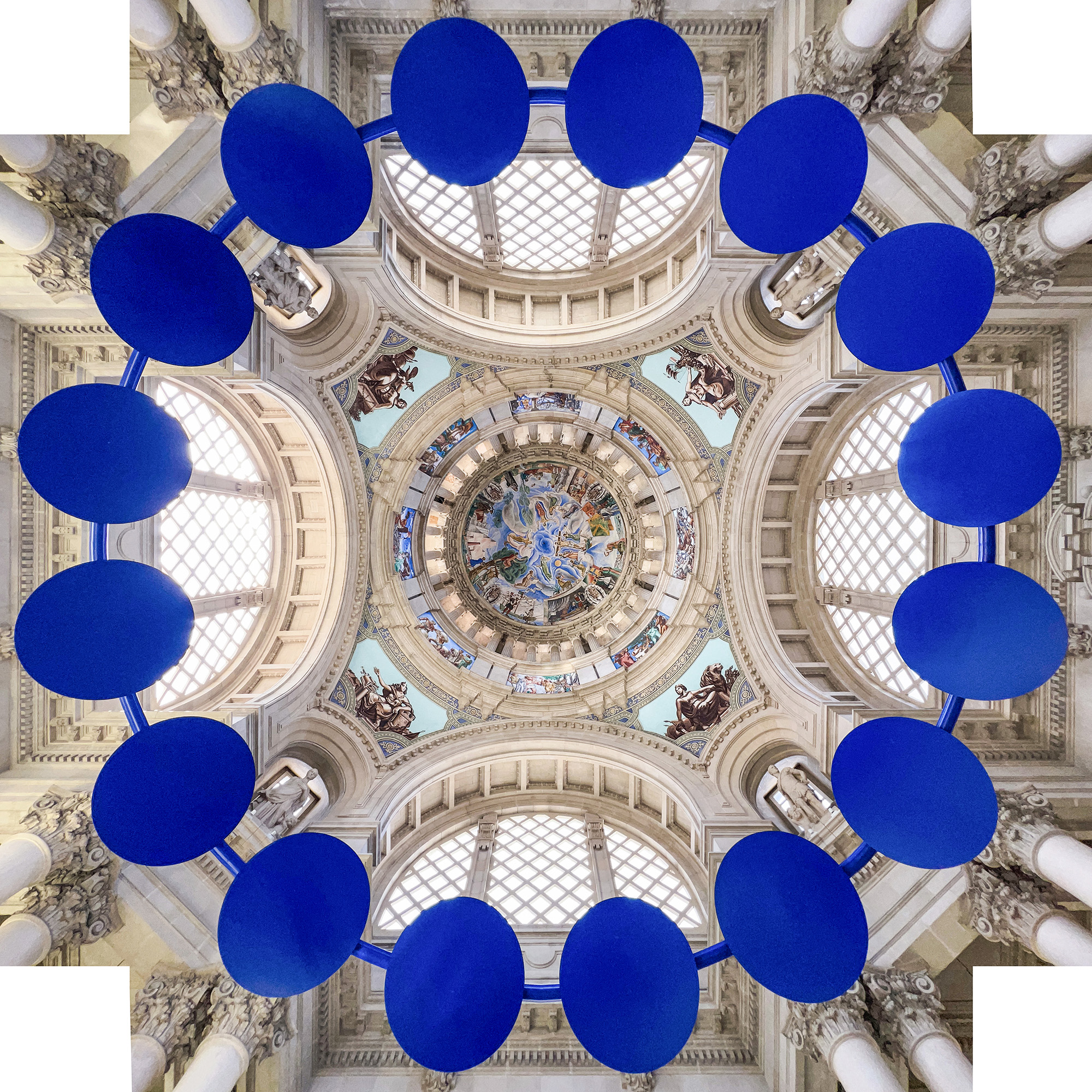The National Art Museum of Catalonia is opening an important exhibition on Francesc d’Assís Galí (1880–1965), the artist behind the paintings of the dome that crowns the Palau Nacional. Galí was one of the most prominent figures in Catalan art in the first half of the 20th century. Trained alongside Pompeu Fabra, he renewed art pedagogy during the Noucentisme movement, becoming the teacher of an entire generation of artists through his Art School, where he trained, among others, Joan Miró and Llorens Artigas.
Galí also developed a prolific artistic career as a painter, draftsman, muralist, poster artist, and illustrator. His most notable work was the large mural on the central dome of the Palau Nacional, in which he depicted 35 allegorical figures representing the Fine Arts, Science, Religion, and the Earth. To paint it, Galí spent more than half a year on a precarious scaffold, thirty meters high.
The Spanish Civil War cut short Galí’s career. As Director General of Fine Arts of the Spanish Republic, he was one of those responsible for moving the works of the Prado Museum to the border in 1938. He too was forced into exile, which he spent over ten years in London.
To celebrate this important exhibition for the museum, the MNAC has commissioned Anna & Eugeni Bach to create a specific piece that highlights the paintings of the dome.
The piece, “Crown of Eyes,” is a symbolic tribute to one of Francesc d’A. Galí’s educational principles: during excursions to the Montseny Mountains with his students, he asked them not to bring tools, but to go only “armed with a crown of eyes on their heads.” With this exercise, Galí encouraged his students to observe nature attentively and to select the most important elements before incorporating them into their artwork.
The crown consists of a twelve-meter diameter ring containing sixteen medallions /eyes, referencing the sixteen columns of the hall that support Galí’s dome. The crown floats six meters high, fragilely, just like Galí’s scaffold during the half-year he spent painting the murals. The entire structure is rendered in a deep blue, echoing the sky of the dome at its highest point.
